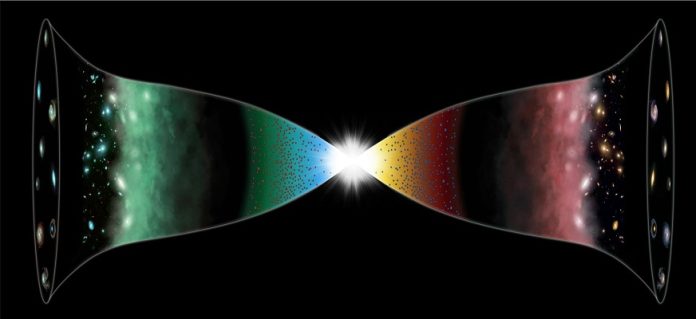
We live in an amazing time for understanding the universe.
Our powerful telescopes show that the cosmos is simpler than expected on the largest scales.
Meanwhile, particle physics experiments at the Large Hadron Collider have found no surprises at the smallest scales.
These findings are surprising because many theorists expected a more complex universe. Today’s mainstream theories combine string theory—a complex mathematical framework—and “cosmic inflation,” which suggests that the universe grew incredibly fast in its early moments.
Together, they predict a complex and chaotic cosmos, but observations are showing something else.
Some theorists argue that our universe is just one part of a “multiverse” where each universe has different physical properties.
But others suggest that the universe might really be simple on all scales. This simpler view could bring us closer to understanding the cosmos’ biggest mysteries.
String theory claims that the universe’s basic building blocks are tiny vibrating strings. The theory also requires more dimensions than the three we experience. These extra dimensions are said to be too small to detect, making the theory nearly impossible to test because it offers countless possibilities for physical laws.
Cosmic inflation, on the other hand, was proposed in the 1980s to explain why the universe looks so smooth and flat. The idea is that, in its early moments, the universe experienced a rapid expansion that flattened out irregularities. This theory is also thought to explain small variations in the early universe’s density, which led to the formation of galaxies.
But despite the appeal of these theories, evidence for them remains elusive. String theory has made no successful predictions, and inflation predicts long-wavelength gravitational waves that haven’t been found. As observations improve, more and more models of inflation are being ruled out.
Physicist Latham Boyle and his colleague, Ilaria Caiazzo, propose a simpler alternative to these complex theories. They looked at some of cosmology’s greatest puzzles with a fresh perspective, using minimal assumptions. Their approach involves viewing the early universe as having a “mirror image” that runs backward in time.
Boyle and Caiazzo built on the idea of “conformal symmetry,” which suggests that particles of light and massless particles don’t experience the shrinking of space during the Big Bang. They theorized that the Big Bang acts like a mirror, where our universe moves forward in time while a mirrored version goes backward. This would restore a fundamental symmetry in physics called CPT symmetry, where every particle has a corresponding “anti-particle” moving in the opposite direction.
This “mirror” idea also provided a clue about dark matter. The researchers predicted the existence of heavy “right-handed” neutrinos, which have never been directly observed but could exist based on the properties of lighter, known neutrinos. They calculated that these right-handed neutrinos could account for dark matter, offering a testable prediction.
Boyle and Caiazzo tackled another big question: Why is the universe so flat and uniform on large scales? To explain this, they applied statistical physics to entire universes. According to their findings, a flat and expanding universe like ours has the highest entropy, meaning it is the most likely to exist. This explanation does not require cosmic inflation.
They also showed that density variations in their mirror universe could arise from a special quantum field without producing the gravitational waves expected in inflation. This aligns with current observations.
Boyle and Caiazzo’s theory is still under development, and more work is needed to confirm that it is mathematically and physically sound. However, their findings suggest that there may be simpler and more testable explanations for the universe’s key features.
By challenging mainstream ideas and focusing on simplicity, this new approach could help lay a stronger foundation for understanding the cosmos. Instead of forcing observations to fit complex theories, scientists should let observations guide new, simpler ideas about how our universe came to be.



